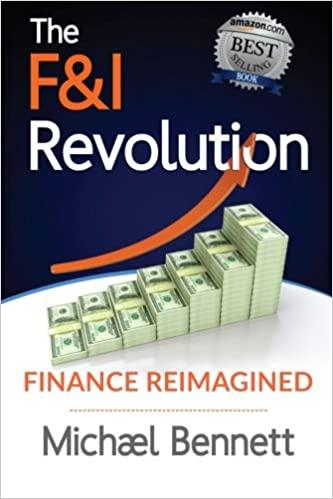Question
1. Light-emitting diode (LED) light bulbs have become required in recent years, but do they make financial sense? Suppose a typical 60-watt incandescent light bulb
1.
Light-emitting diode (LED) light bulbs have become required in recent years, but do they make financial sense? Suppose a typical 60-watt incandescent light bulb costs $.45 and lasts for 1,000 hours. A 7-watt LED, which provides the same light, costs $2.25 and lasts for 40,000 hours. A kilowatt-hour of electricity costs $.121, which is about the national average. A kilowatt-hour is 1,000 watts for 1 hour. However, electricity costs actually vary quite a bit depending on location and user type (you can get information on your rates from your local power company). An industrial user in West Virginia might pay $.04 per kilowatt-hour whereas a residential user in Hawaii might pay $.25. You require a 10 percent return and use a light fixture 500 hours per year. What is the break-even cost per kilowatt-hour?
2.
| You have been hired as a consultant for Pristine Urban-Tech Zither, Incorporated (PUTZ), manufacturers of fine zithers. The market for zithers is growing quickly. The company bought some land three years ago for $1.9 million in anticipation of using it as a toxic waste dump site but has recently hired another company to handle all toxic materials. Based on a recent appraisal, the company believes it could sell the land for $2.2 million on an aftertax basis. In four years, the land could be sold for $2.4 million after taxes. The company also hired a marketing firm to analyze the zither market, at a cost of $275,000. An excerpt of the marketing report is as follows: |
| The zither industry will have a rapid expansion in the next four years. With the brand name recognition that PUTZ brings to bear, we feel that the company will be able to sell 5,200, 5,900, 6,500, and 4,800 units each year for the next four years, respectively. Again, capitalizing on the name recognition of PUTZ, we feel that a premium price of $435 can be charged for each zither. Because zithers appear to be a fad, we feel at the end of the four-year period, sales should be discontinued. |
| PUTZ believes that fixed costs for the project will be $375,000 per year, and variable costs are 20 percent of sales. The equipment necessary for production will cost $2.85 million and will be depreciated according to a three-year MACRS schedule. At the end of the project, the equipment can be scrapped for $405,000. Net working capital of $150,000 will be required immediately. PUTZ has a tax rate of 22 percent, and the required return on the project is 13 percent. Refer to Table 10.7. |
| What is the NPV of the project? |
Step by Step Solution
There are 3 Steps involved in it
Step: 1

Get Instant Access to Expert-Tailored Solutions
See step-by-step solutions with expert insights and AI powered tools for academic success
Step: 2

Step: 3

Ace Your Homework with AI
Get the answers you need in no time with our AI-driven, step-by-step assistance
Get Started


